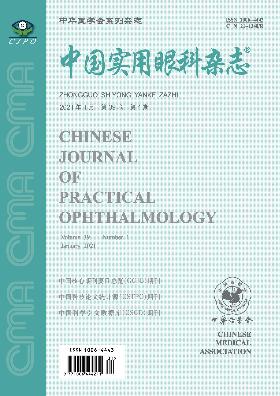应用Sirius前段分析系统和TMS-4地形仪测量近视眼角膜曲率和散光的比较
引用次数: 0
摘要
目的探讨Sirius系统测量近视眼角膜屈度和散光的可重复性及与TMS-4常规地形仪的一致性。方法选择125例(125眼)近视患者进行激光视力矫正手术前的前瞻性对照研究。首先采用Sirius前段分析系统3次测量角膜平度角(Kf)、陡度角(Ks)、平均角(Km)、角膜散光和角膜轴,以评估设备的可重复性。在TMS-4地形仪测量的三幅图像中,选择图像质量最好的进行后续分析。采用配对样本t检验和Pearson线性相关进行统计分析。并采用Bland-Altman分析来评价两种测量方法的一致性。结果Sirius测量的角膜Kf、Ks、Km、角膜散光和角膜轴具有较高的可重复性,ICC和CoA均大于0.90。角膜Kf、Km、散光差异分别为0.11±0.14 D、0.05±0.13 D、0.12±0.19 D,差异均有统计学意义。角膜Kf、Ks、Km、散光和轴的95% LoA值分别为0.17 ~ 0.38 D、-0.36 ~ 0.33 D、-0.20 ~ 0.30 D、-0.50 ~ 0.26 D和17.61 ~ 21.37°,分别为4.80%、5.60%、5.60%、5.60%、5.60%和5.60%。结论Sirius测量角膜曲率和散光具有较高的重复性,但与TMS-4地形仪测量结果一致性不佳。关键词:天狼星;TMS-4;地形学者;角膜散光计;散光;协议本文章由计算机程序翻译,如有差异,请以英文原文为准。
Comparison of corneal curvature and astigmatism measurements in myopia using Sirius Anterior Segment Analysis System and TMS-4 topographer
Objective
To explore the repeatability of corneal curvature and astigmatism measurements using Sirius system and the agreement with the TMS-4 conventional topographer in myopia.
Methods
A prospective control study of 125 patients(125eyes) with myopia before laser vision correction surgery were selected. Measurements of corneal flat keratometry(Kf), steep keratometry(Ks), mean keratometry(Km), corneal astigmatism and axis were taken firstly using Sirius anterior segment analysis system three times to assess the repeatability of the device. The best quality of imagein three acquisitions measured by TMS-4 topographer was chosen for analyzing subsequently. Paired samples t-test and Pearson linear correlation were used for statistical analysis. And a Bland-Altman analysis was used to evaluate the consistency of the two methods of measurement.
Results
Corneal Kf, Ks, Km, corneal astigmatism and axis measured by Sirius showed high intraobserver repeatability, with all ICC and CoA more than 0.90. Corneal Kf, Km, and astigmatism differences were 0.11±0.14 D, 0.05±0.13 D and-0.12±0.19 D, which were statistically significant, respectively. There were 4.80%,5.60%,5.60%, 5.60% and 5.60% points exceeded 95% LoA of-0.17 to 0.38 D,-0.36 to 0.33 D,-0.20 to0.30 D,-0.50 to 0.26 D and-17.61 to 21.37 degrees for corneal Kf, Ks, Km, astigmatism and axis, respectively.
Conclusions
Sirius show high repeatability in measurement of corneal curvature and astigmatism, the measurement agreement between Sirius and TMS-4 topographer is not good.
Key words:
Sirius; TMS-4; Topographer; Keratometry; Astigmatism; Agreement
求助全文
通过发布文献求助,成功后即可免费获取论文全文。
去求助
来源期刊
自引率
0.00%
发文量
9101
期刊介绍:
China Practical Ophthalmology was founded in May 1983. It is supervised by the National Health Commission of the People's Republic of China, sponsored by the Chinese Medical Association and China Medical University, and publicly distributed at home and abroad. It is a national-level excellent core academic journal of comprehensive ophthalmology and a series of journals of the Chinese Medical Association.
China Practical Ophthalmology aims to guide and improve the theoretical level and actual clinical diagnosis and treatment ability of frontline ophthalmologists in my country. It is characterized by close integration with clinical practice, and timely publishes academic articles and scientific research results with high practical value to clinicians, so that readers can understand and use them, improve the theoretical level and diagnosis and treatment ability of ophthalmologists, help and support their innovative development, and is deeply welcomed and loved by ophthalmologists and readers.

 求助内容:
求助内容: 应助结果提醒方式:
应助结果提醒方式:


